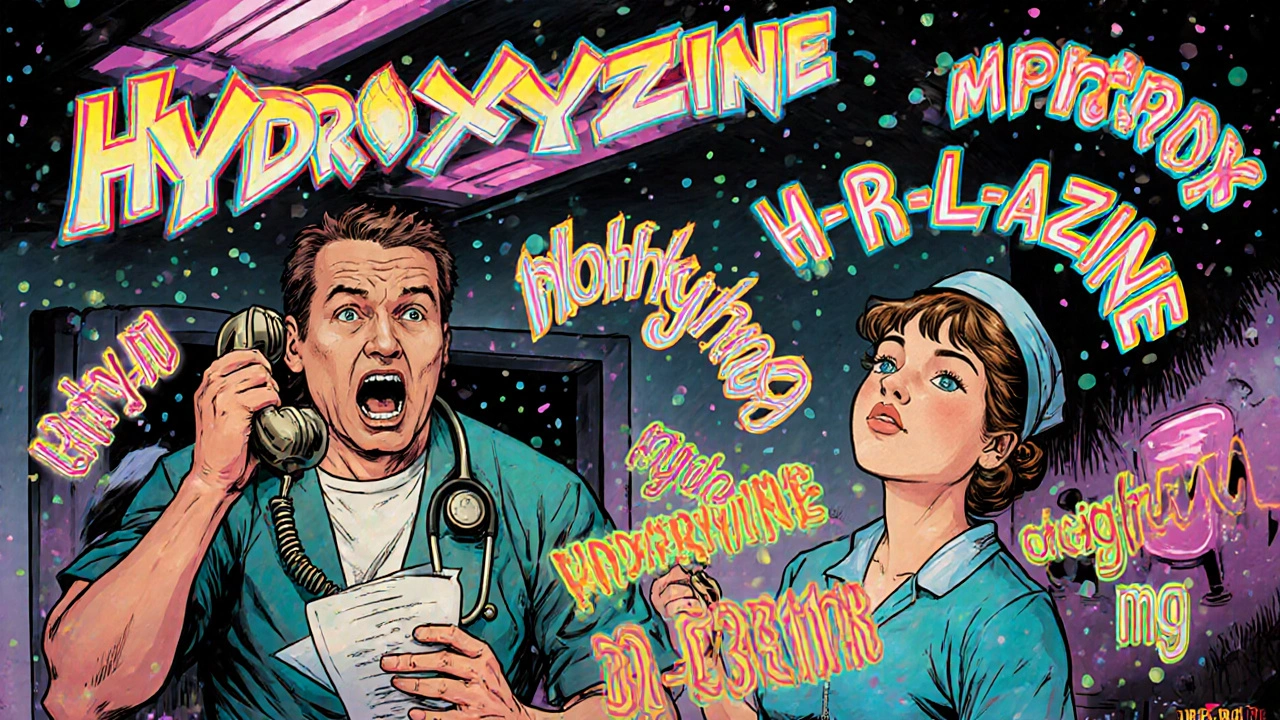
Every year, thousands of patients in U.S. hospitals are at risk not because of a bad drug, but because of a misheard word. A nurse hears hydralazine but the doctor said hydroxyzine. A dose of fifteen milligrams becomes fifty because the prescriber didn’t say one-five. These aren’t hypotheticals-they’re real events that have led to overdoses, ICU transfers, and even deaths. Verbal prescriptions are still common in healthcare, even in 2025. And if they’re going to be used, they need to be done right.
Why Verbal Prescriptions Still Exist
You might think electronic prescribing made verbal orders obsolete. But that’s not true. In emergency rooms, operating rooms, and during patient transfers, there’s no time to log into a computer. A trauma patient needs epinephrine now. A surgeon in the middle of an operation can’t step out to type a prescription. Verbal orders fill that gap. According to the Agency for Healthcare Research and Quality, hospitals still use verbal prescriptions in 10-15% of cases. In high-pressure areas like the ER, that number jumps to 25-30%. The problem isn’t that verbal orders exist. It’s that they’re often done poorly. Studies show that without strict protocols, error rates can hit 30-50%. The Institute for Safe Medication Practices Canada calls verbal orders “known to be susceptible to error.” But here’s the key: when done correctly, they’re not the enemy. They’re a necessary tool-and like any tool, they need the right technique.The One Rule That Saves Lives: Read-Back Verification
There’s one practice that separates safe verbal prescriptions from dangerous ones: read-back verification. It’s simple. The person receiving the order repeats it back word-for-word to the prescriber. The prescriber confirms it’s correct. That’s it. The Joint Commission made this mandatory in 2006. It’s not optional. And it’s not just a formality. A 2006 study from the Agency for Healthcare Research and Quality showed that when read-back is used properly, medication errors drop by up to 50%. In one NICU case, a premature infant was almost given a lethal dose of antibiotics because two drugs were ordered at once. The nurse didn’t read back the order. The error was caught only because a second nurse questioned it. But here’s the catch: read-back doesn’t happen nearly enough. A 2020 survey of nurses found that 63% reported prescribers resist read-back. Some think it’s slow. Others think it’s unnecessary. But when a nurse says, “I heard you say 50 mg of hydralazine,” and the doctor replies, “No, I said 5 mg-hydroxyzine,” that’s a life saved.How to Say It Right: Phonetics, Numbers, and No Abbreviations
It’s not enough to just repeat the order. You have to say it clearly. The Institute for Safe Medication Practices gives exact rules:- Spell out drug names phonetically. Don’t say “Zyprexa.” Say, “Z-Y-P-R-E-X-A.” Confusion between Zyprexa and Zyrtec has caused fatal allergic reactions.
- Use two methods for numbers. Say “fifteen milligrams” AND “one-five milligrams.” This stops confusion between 15 and 50.
- Avoid all abbreviations. Never use “BID,” “QID,” or “PO.” Say “twice daily,” “four times daily,” or “by mouth.”
- Clarify units. Always say “milligrams,” not “mg.” Say “milliliters,” not “mL.”
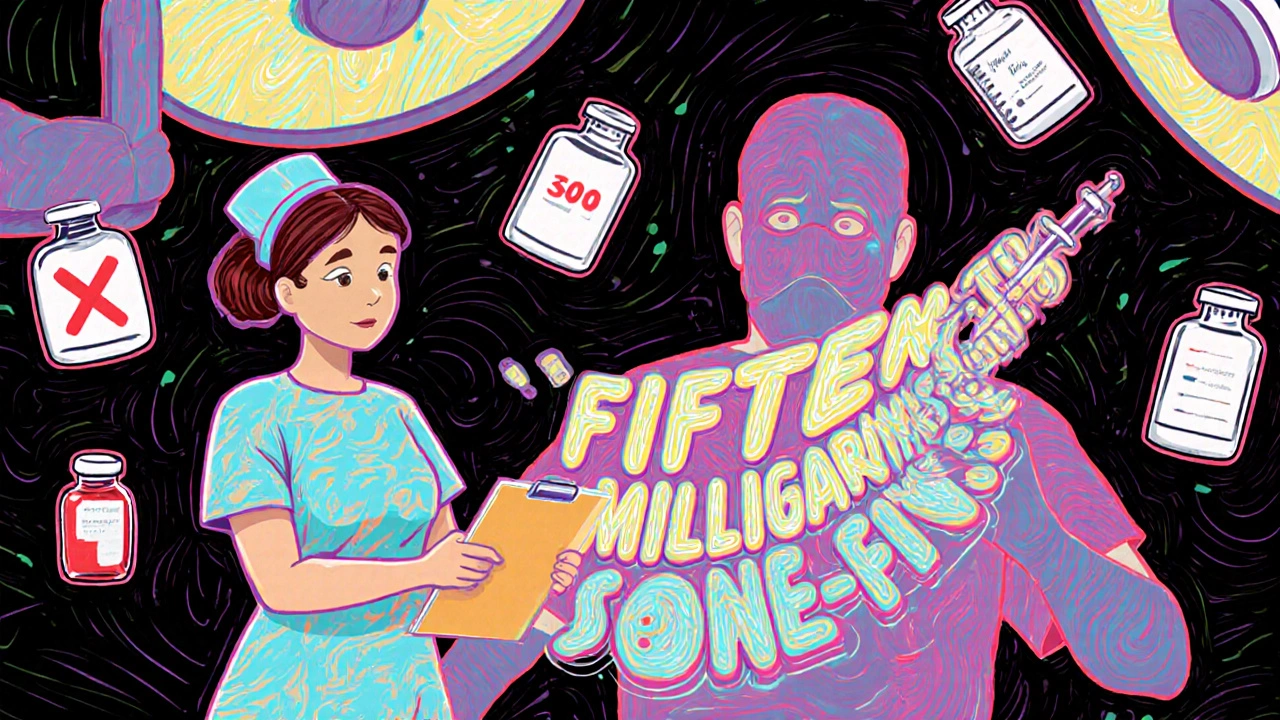
High-Alert Medications: When Verbal Orders Are Forbidden
Some drugs are too dangerous to order verbally-unless it’s an emergency. The Pennsylvania Patient Safety Authority and Washington State Department of Health both list these as high-alert:- Insulin
- Heparin
- Opioids (morphine, fentanyl, hydromorphone)
- Chemotherapy agents
- Concentrated electrolytes (potassium chloride, sodium chloride)
What Must Be Documented-And When
A verbal order isn’t real until it’s written down. And not just written-it’s written with full details:- Patient’s full name and date of birth
- Medication name (spelled out)
- Dose with units (e.g., “5 milligrams”)
- Route (e.g., “intravenous,” not “IV”)
- Frequency (e.g., “every 6 hours”)
- Indication (e.g., “for sepsis”)
- Name and credentials of prescriber
- Exact time and date the order was received
- Time and date of authentication
Who Can Take Verbal Orders?
Not everyone can. Only licensed providers or trained staff under direct supervision can receive verbal orders. In most hospitals, that means RNs, LPNs, pharmacists, or certified medical assistants with specific training. Unlicensed staff-like receptionists or transporters-can’t take them. Ever. CMS allows authorized documentation assistants to enter verbal orders into the EHR, but only if a licensed provider is giving the order and confirms it. That’s a big change from 2010. But it’s still not a loophole. The provider remains legally responsible.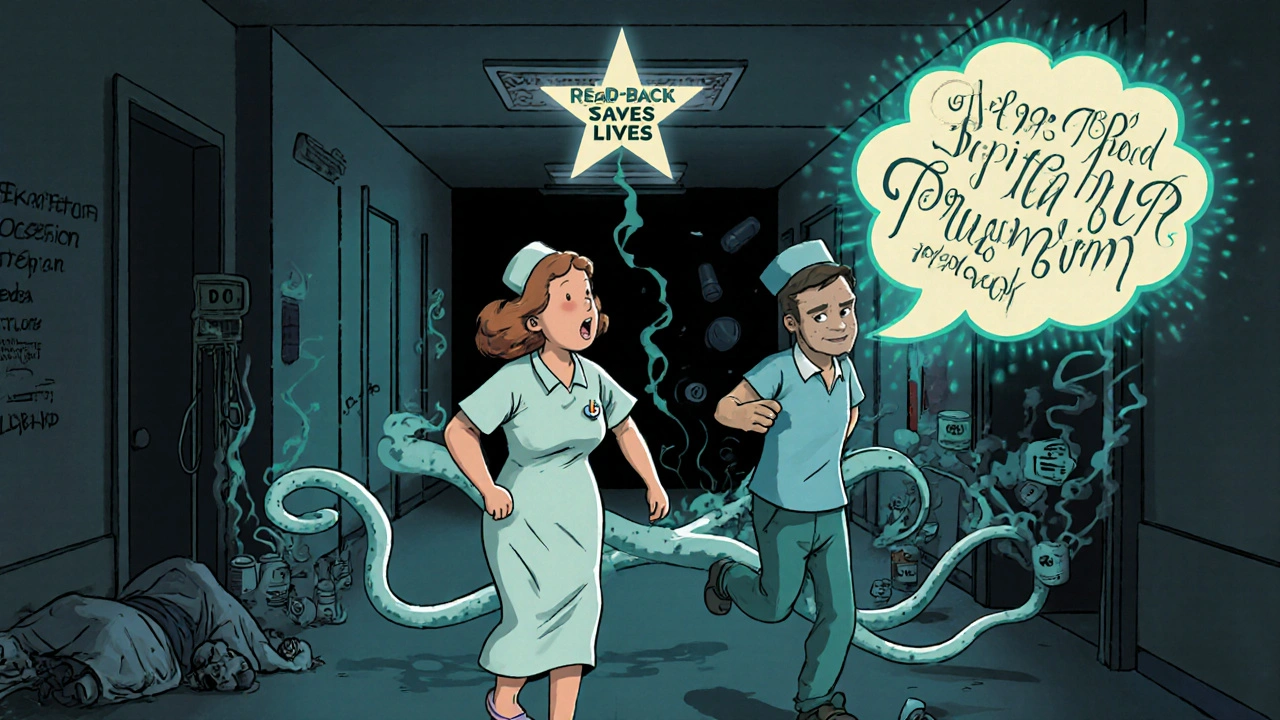
Common Mistakes and Real Cases
Here are the top three mistakes that lead to harm:- Mixing multiple orders at once. In 2006, a premature infant got ampicillin and gentamicin mixed up during a transfer. Two drugs, one verbal order. No read-back. The baby suffered kidney damage.
- Ordering during distractions. A doctor gives a prescription while checking a text message. The nurse hears “Lisinopril” but the doctor meant “Lithium.” The patient developed lithium toxicity.
- Assuming familiarity. “You know what I mean.” That phrase has killed. A nurse in Arizona assumed “Cipro” meant 500 mg. The doctor meant 250 mg. The patient developed a resistant infection.
What You Can Do-Even If You’re Not the Doctor
You don’t have to be the prescriber to prevent an error. If you’re a nurse, pharmacist, or even a patient advocate:- Always ask for spelling-even if you’ve heard the drug a hundred times.
- Never assume. If something sounds off, say so.
- Document the time the order was received, not when you entered it.
- Report near-misses. They’re not failures-they’re warnings.
- Use the “I need to repeat this back” script: “Dr. Smith, I heard you order hydralazine 5 mg IV for hypertension. Is that correct?”
The Future: Less Verbal, But Never None
Voice-to-text systems are getting better. AI-assisted EHRs are reducing manual entry. KLAS Research predicts verbal orders will drop to 5-8% by 2025. But Dr. Robert Wachter of NEJM Catalyst says it right: “Some clinical scenarios will always require verbal communication.” That’s why safety protocols aren’t going away. They’re evolving. The FDA is working on standardizing how high-risk drug names are pronounced. Hospitals are training staff on sound-alike pairs like “Celebrex” and “Celexa,” “Zyprexa” and “Zyrtec.” The goal isn’t to eliminate verbal orders. It’s to make them safe. Because when done right, they save lives. When done wrong, they end them.Are verbal prescriptions still legal in the U.S.?
Yes. Verbal prescriptions are still legal and permitted under CMS and The Joint Commission regulations. However, they must follow strict safety protocols, including read-back verification and prompt documentation. They are not banned-but they are heavily regulated.
What’s the biggest cause of errors in verbal prescriptions?
The biggest cause is sound-alike drug names. For example, hydralazine and hydroxyzine, or Celebrex and Celexa, sound nearly identical. Without phonetic spelling and read-back, these mix-ups lead to serious harm. Studies show sound-alike confusion accounts for 34% of verbal order errors.
Can a nurse refuse to take a verbal order?
Yes. Nurses have a professional and legal duty to ensure patient safety. If an order is unclear, incomplete, or violates policy (like a high-alert drug given verbally without emergency justification), the nurse can-and should-ask for clarification or refuse to carry it out until it’s corrected.
Why can’t we just use electronic orders all the time?
Electronic systems are ideal, but not always possible. During surgeries, trauma resuscitations, or power outages, there’s no time to log in. Verbal orders bridge that gap. The goal isn’t to eliminate them-it’s to reduce their use where possible and make them safer when necessary.
How long do I have to document a verbal order?
CMS requires authentication within 48 hours. But best practice-and policy at most top hospitals-is to document immediately and authenticate within the same shift. Delays increase the risk of misadministration and legal exposure.
Do verbal orders require a witness?
Not always. But many hospitals require a second licensed provider to verify high-risk orders. For example, in an ICU, two nurses may independently confirm a heparin order. While not federally required, this is a common safety layer in high-risk settings.

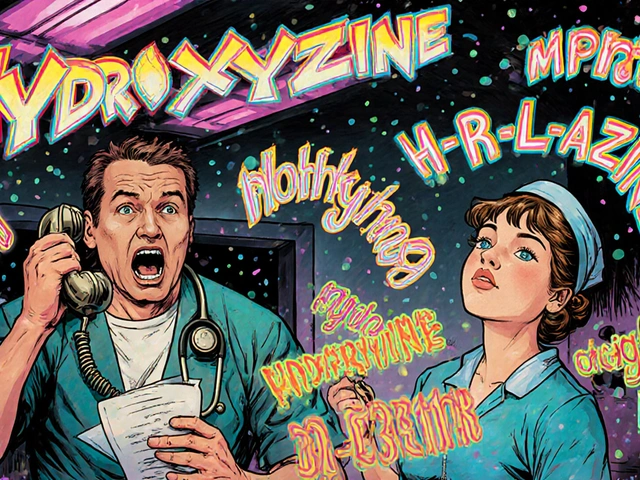
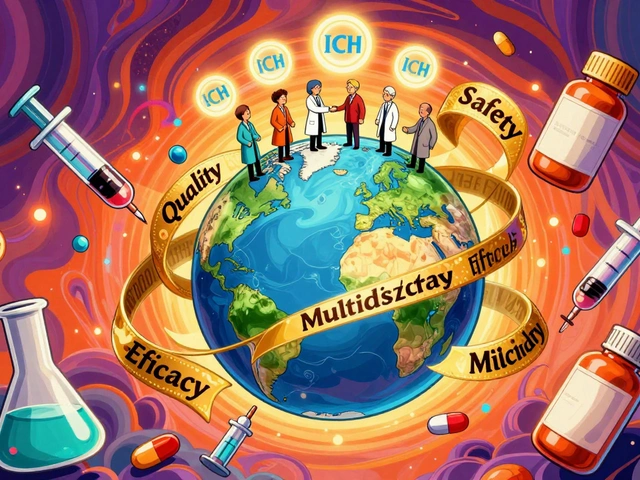
So many hospitals still skip read-back because it's 'too slow'-but they’ll take 45 minutes to fill out a form about why the patient died. Priorities, people. I’ve seen nurses get yelled at for asking for spelling. Meanwhile, the same doctors are on TikTok showing off their ‘heroic’ ER saves. Hypocrisy wrapped in scrubs.
Let us not forget: language is a fragile vessel. The phoneme /z/ in 'hydroxyzine' is a ghost in the machine-barely distinguishable from /l/ in 'hydralazine' when whispered over static, adrenaline, and exhaustion. We are not merely mishearing words-we are misinterpreting the silence between them. The read-back is not protocol-it is metaphysics made practical. A ritual against entropy.
There’s something beautiful about how something so simple-saying 'one-five' instead of 'fifteen'-can hold the line between life and death. It’s not about bureaucracy. It’s about showing up for each other, even when you’re tired, even when you’re rushed. That nurse in Texas who made the doctor say it back first? That’s leadership. Not with a title. With a voice.
We don’t need more tech. We need more courage to pause. To ask. To repeat. To care enough to get it right.
so uh... we still use verbal orders? in 2025? wow. just wow. guess we’re still waiting for the future to catch up to 1998.
also, 'BID'? really? who still says that? did we forget the 2000s?
Let’s quantify the emotional labor here. 63% of nurses report resistance to read-back. That’s not inefficiency-that’s institutional gaslighting. The prescriber’s ego is the primary vector of error. The system doesn’t fail. The hierarchy does.
And don’t get me started on 'high-alert' drugs being exempt from verbal orders-except when they’re not. That’s not policy. That’s performative compliance with a side of liability laundering.
Look, we gotta stop coddling the med students. If you can't spell 'hydroxyzine' right after med school, you shouldn't be near a patient. We're not in kindergarten. Electronic orders are FREE. Why are we still doing this? It's like using a fax machine to book a flight.
Also, 'mL'? Come on. It's milliliters. We're not in Europe. We're AMERICA. We use words. Not weird little symbols.
one time i heard a doc say 'morphine 5' and the nurse said 'five what?' and he said 'you know, the usual.' i swear to god that’s how people die.
It is not acceptable to use abbreviations such as 'BID,' 'QID,' or 'IV' in any professional healthcare context. These are not shorthand-they are negligence dressed in convenience. The Joint Commission mandates clarity. Any deviation is not a 'time-saver'-it is a violation of the Hippocratic Oath’s first principle: Primum non nocere.
Read-back works but only if the person saying it has power. In 80% of cases, the nurse is the one who gets yelled at for asking. The doctor? He gets a coffee. That’s the real problem. Not the protocol. The power imbalance.
And yes, I’ve seen insulin ordered verbally in non-emergency. No one got fired. Just another near-miss filed under 'administrative error.'
My dad’s a nurse. He says the only thing that changed in 20 years? Now they get written up for asking too many questions. Funny how safety became a compliance checkbox instead of a culture.